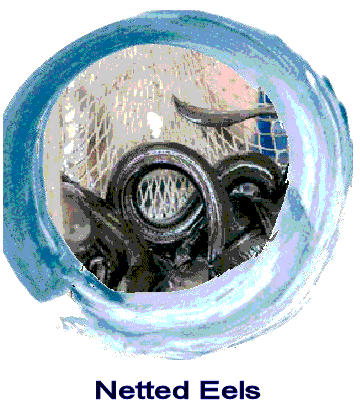
The Alresford Eel House
History and Habitat
Can nature rebuild the eel population?
Wild eels live across the world, and at one time were probably the most widespread species of fish in Europe. Their number in Europe has fallen rapidly since 1980. A 2019 report from the International Council for the Exploration of the Seas (ICES) showed that the number of glass eels entering European waters at the end of their migration from the Sargasso Sea in 2018 was 1.9 per cent of the average for 1960-1979.
Local visitors to the Eel House have reported an abundance of eels in Alresford rivers in the 1960s, and someone who worked at the watercress beds just north of the Eel House told us that they often found them sheltering in the pipes and waterways around the site.
The Environment Agency surveys 10 sites across the Itchen every two years, and its 2019 report shows that:
- 166 eels were caught, compared with 321 in 2009, when the population had already collapsed;
- the catch of 45 at Ham Farm (near Eastleigh) was the lowest on record; and
- eel numbers are critically low and the eel population remains at risk.

There are six possible reasons for this decline:
- The Gulf Stream is slowing, making it harder for glass eels to reach Europe;
- Over-fishing of glass eels and mature eels;
- Theft of glass eels at the end of their migration, for sale to eel farms - in 2020 officers at Heathrow intercepted tanks containing 2.5 million glass eels stolen from the Severn, ready to be exported;
- Contamination in rivers and oceans enters eels
- bodies, which may reduce the females
- ability to produce eggs;
- A disease which has damaged Eastern eels is now damaging eels in the Atlantic;
- Physical barriers to migration such as power stations or dams.
The Sustainable Eel Group (SEG) is a Europe-wide conservation and science-led organisation working with partner bodies and individuals to accelerate the eel’s recovery. In 2007 The EU Eel Regulation was passed to control eel poaching but implementation by member states has been poor and the regulation is currently being reviewed to increase effectiveness. The SEG is working closely with the EU to make this legislation really work.
Poaching is a major problem – over 30 tons are poached annually in France (sold to China and Japan) and in 2019 Europol seized 15 million glass eels which were being trafficked.
The SEG visited the Eel House 18 months ago and were enthusiastic about our work which helps to raise the profile of eels in our community.